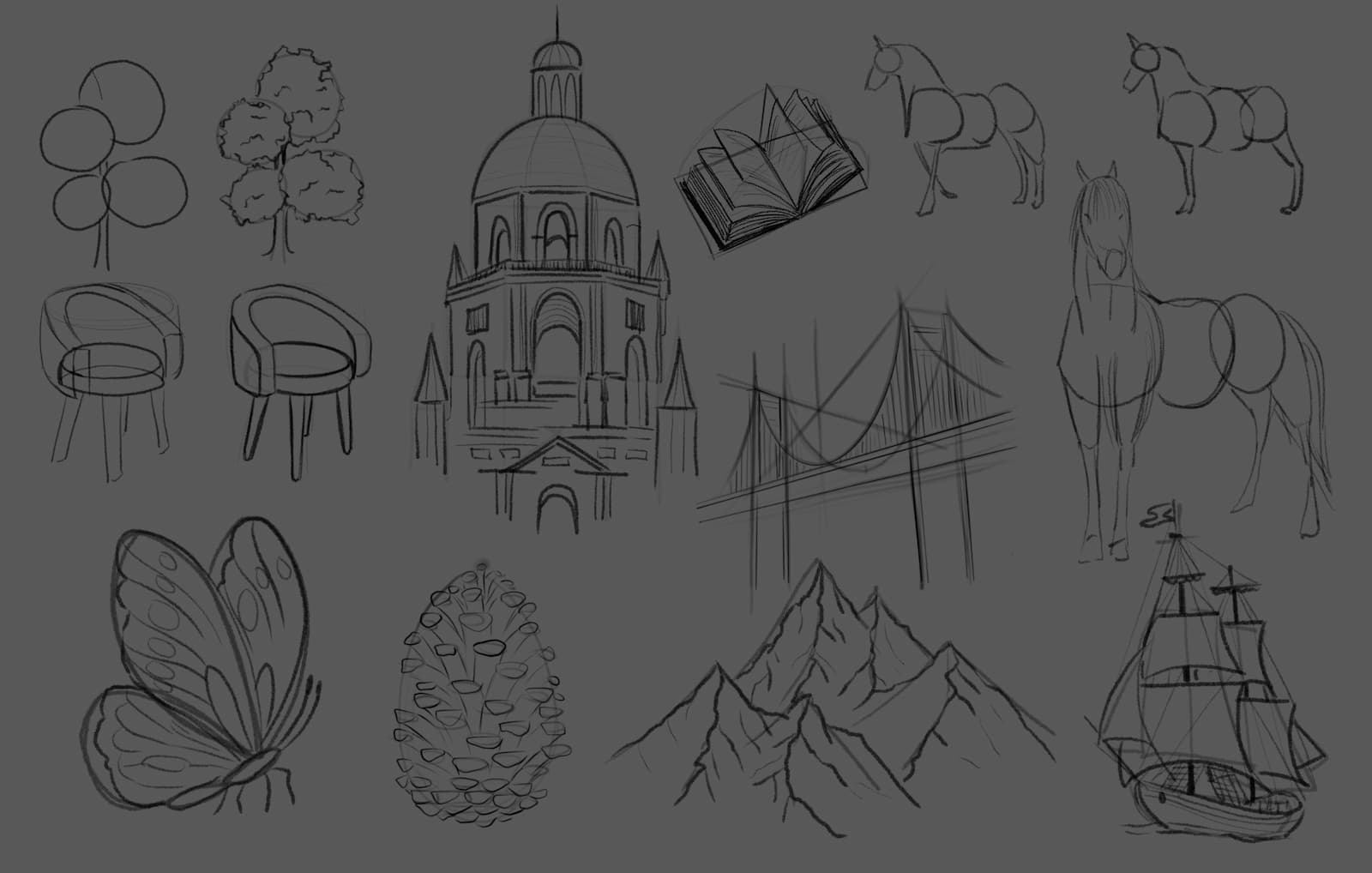Drawing from simple shapes to complex objects is a essential skill for artists of all levels, and it’s the foundation of creating realistic-looking drawings. Starting with basic shapes is an excellent way to simplify complex objects and break them down into more manageable parts. By mastering this skill, artists can create more detailed and accurate drawings. In this article, we’ll discuss some tips and techniques that artists can use to improve their ability to draw complex objects from simple shapes.

Practice With Basic Shapes
The first step in drawing from simple shapes is to identify the basic shapes that make up an object. Look at things around you like a chair, a bag, a pencil, or a cat. Imagine how you would draw them using only circles, squares, triangles, and rectangles. The more complex the object, the more basic shapes you’ll need to use to break it down.
To start easy, a circle can serve as the basis for a face, a square can be transformed into a building, and triangles can form the structure of mountains or trees. By understanding how to manipulate and combine these shapes, you can easily construct the framework for any object you want to draw.
To get comfortable with drawing basic shapes, it’s essential to practice drawing geometric shapes. Sketch them lightly and loosely, focusing on achieving accurate proportions and capturing the overall structure. This practice will enable you to establish a strong foundation for the subsequent stages of your drawing.

Drawing From Simple Shapes To Complex Objects
Add details
Having established the basic shapes, it is time to refine and add details to your drawing. Shift your focus from the general structure to the specific features and intricacies of the object. Observe and analyze the relationships between different elements, paying close attention to the smaller shapes that exist within the larger structure.
Gradually transition from the simplicity of the basic shapes to the complexities of the object’s form. Refine the proportions, angles, and curves, ensuring they align with your reference or desired outcome. This stage requires patience, careful observation, and a willingness to revise and iterate as needed.
This is where you’ll begin to see your drawing come to life gradually.

Use shading to create depth
Shading is a powerful technique that brings depth and dimension to your drawings. By understanding how light interacts with objects, you can recreate realistic shadows, highlights, and gradients. Begin by identifying the primary light source in your composition and envision where shadows would naturally fall. Through controlled application of darker values, create the illusion of depth and form.
Experiment with shading techniques such as hatching, cross-hatching, stippling, or blending with various tools. Observe the interplay of light and shadow in your reference or the objects around you, and strive to replicate that effect in your drawing. Mastering shading will elevate your work to new levels of realism and visual impact.
Some Examples
Let’s take a look at some examples.
I will start with this bird. I am using a few circles and triangles here. Once you have the basic shapes in place, it’s time to add details.
Start refining your drawing by gradually adding smaller shapes and lines to capture the specific features of your subject. Pay attention to proportions, angles, and curves.
Details are what make your drawing unique and recognizable. Take your time and focus on capturing the characteristics that define your subject, whether it’s the facial features of a portrait or the intricate patterns of a flower.




Don’t be afraid to make mistakes
Artistic growth is often accompanied by a series of mistakes and setbacks. Embracing these moments is essential for progress. Rather than being discouraged, view mistakes as valuable learning opportunities. If a line or shape doesn’t meet your expectations, don’t hesitate to erase and try again.
Remember that every stroke contributes to your development as an artist. Experimentation is key; explore different approaches, techniques, and mediums. Push your creative boundaries and welcome the unexpected. Embracing mistakes fosters resilience, adaptability, and a willingness to explore new artistic horizons.
Drawing inspiration from the work of established artists can be immensely beneficial for your artistic growth. Expose yourself to a diverse range of artistic styles, techniques, and interpretations. Analyze their approaches to drawing complex objects, paying particular attention to their use of lines, shading, composition, and overall execution.

In conclusion,
Drawing from simple shapes is an essential skill for any artist looking to create realistic-looking drawings. By breaking down complex objects into basic shapes, you can simplify the drawing process and create more accurate and detailed drawings. Practice regularly, study other artists, and don’t be afraid to make mistakes. With time and practice, you can master this skill and create amazing works of art that will make you proud.
Naturally, you can ask me anything you are wondering on Instagram and check it for more drawings. For more Art & Architecture content, check out my other free resources here. And if you are interest in behind-the-scenes projects and advice about your own project, you can find me on Patreon!
Drawing From Simple Shapes To Complex Objects


